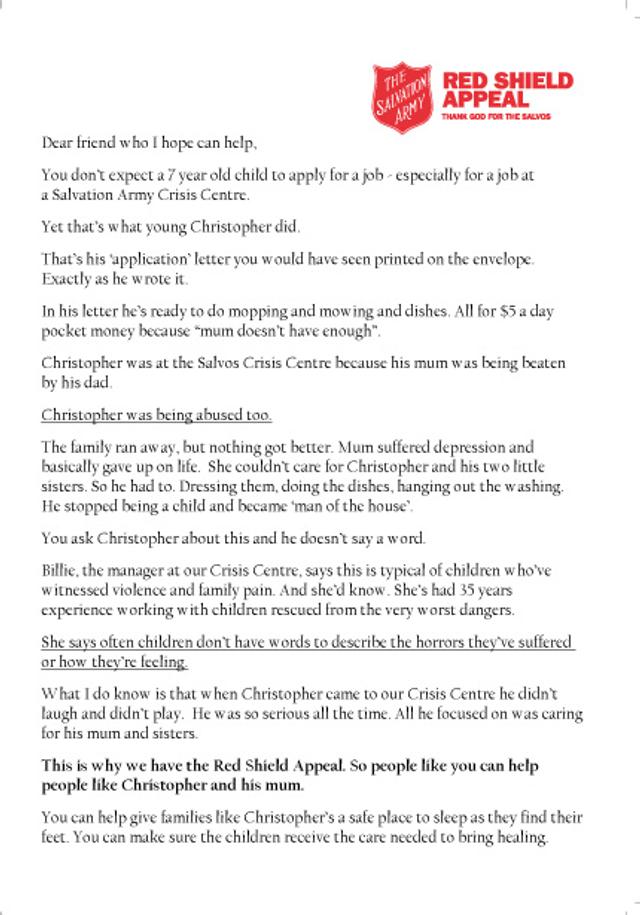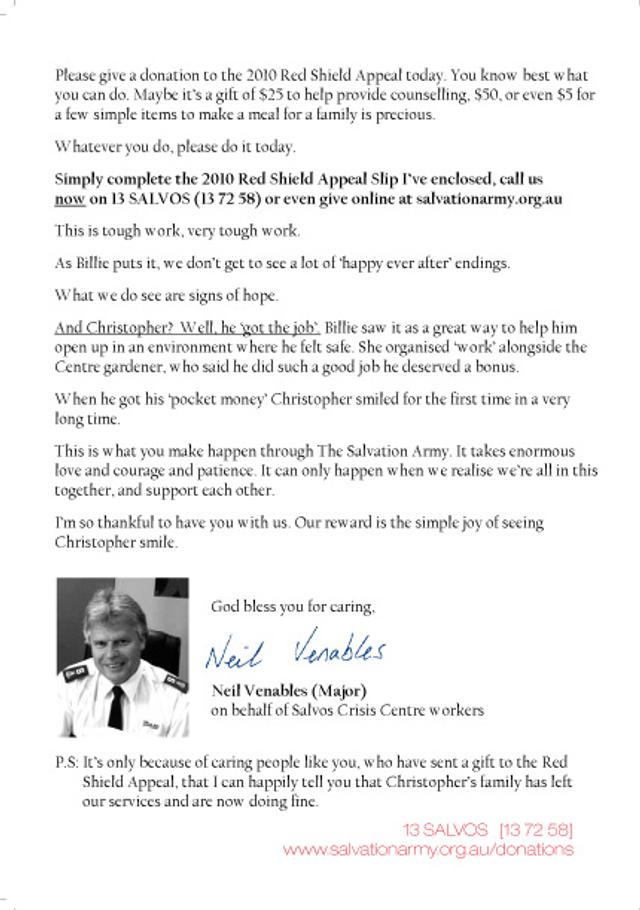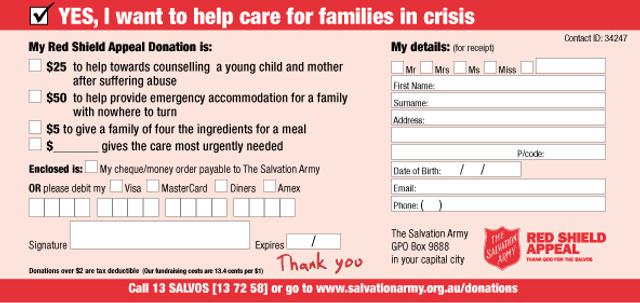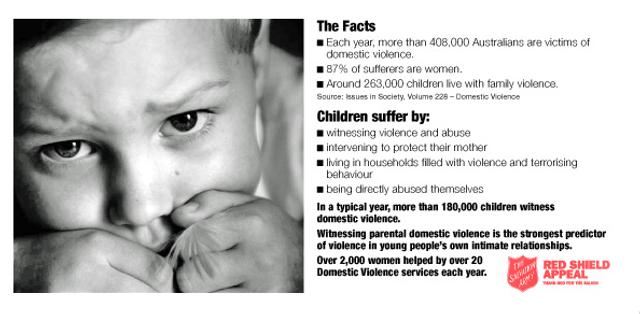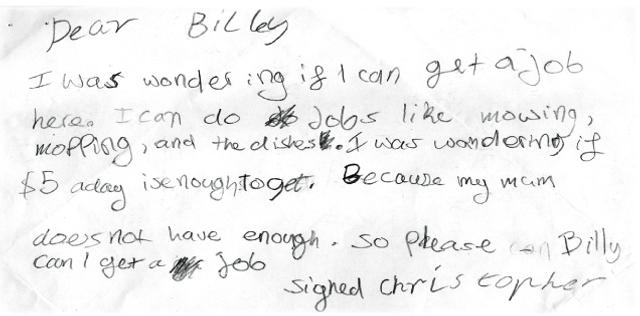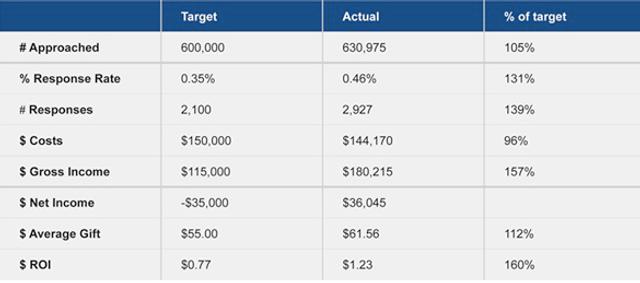The Salvation Army: Christopher’s letter
- Exhibited by
- Warren Atkins, Robejohn & Associates.
- Added
- June 20, 2013
- Medium of Communication
- Direct mail
- Target Audience
- Awareness
- Type of Charity
- Community & social services
- Country of Origin
- Australia
- Date of first appearance
- June, 2010
SOFII’s view
We love this, of course, because once again it proves that if you have a good story and you tell it well people will reach into their pockets to help you. But we especially like this story because the Salvation Army in Australia has built such a strong team throughout the whole organisation that the support worker who received Christopher's letter went straight to the fundraisers to show it to them and to tell the story of Christopher and his family. Of course, being the good fundraisers that they are, they jumped at the chance to use it.
Creator / originator
The Salvation Army and Robejohn & Associates.
Summary / objectives
The Salvation Army needed to run an acquisition campaign that hadn't been anticipated and they needed to put it together quickly before the end of the financial year. They had a story, all they needed was the creative work, a vehicle and an audience.
Background
A young boy who felt sad for his mother wrote a letter on a brown paper bag to Billie, a Salvation Army support worker who had been helping the single-parent family. His letter asked if he could get a job with the Salvation Army for $5 a day so he could help his mum make ends meet – mowing, mopping and dishes were his specialty. Christopher was seven years old.
Billie showed Christopher's hand-written letter to the fundraising team and filled them in with the family's story. It was a story that needed no embellishment or fabrications. It was real, emotional and just needed to be told. It was the obvious choice to be the focus of the urgent acquisition campaign.
The strategy was to develop a simple direct response campaign that would reach a large audience, generate interest and, most importantly, acquire a maximum number of new donors. Robejohn was given the challenge and developed the creative for an 'unaddressed householder'. This was used because it would get to more people than an addressed mailing and suited the tight deadlines.
There was no personalisation in the pack, so it was even more important that the letter inside felt personal. An A5 format was used to give it a friendly feeling and to ensure it was succinct with one key message. The letter told Christopher's story, presented a fundraising offer and included the call to action.
A coupon with an image of an innocent looking boy was used for the visual link and a reply paid envelope was included.
Robejohn ran postcode penetration analysis on the existing supporter database to find geographic areas that had a higher density of Salvation Army supporters with a higher life-time value. A ranking system was applied and postcodes across the Southern Territory of Australia (the states of Victoria, South Australia, Western Australia and Tasmania) were selected for distribution of over 630,000 packages.
Timing was the biggest problem with less than three weeks to get creative approval and the print and production of 630,000 mail packs delivered to Australia Post. It was delivered to households on 15 June 2010, two and a half weeks before the end of the financial year.
Special characteristics
Christopher's actual letter was used because it was so obviously real and would really get to people's emotions. Printing it on the outer envelope created intrigue and gave the package a strong chance of being opened. It was a brave decision by the Salvos, as the Salvation Army is affectionately known in Australia, not to include their logo on the outer envelope. It was felt a logo would give too much away before it was opened and, therefore, affect results. The outer envelope was essentially used as the motivation device to present the need.
The speed at which it was produced.
We used lower than usual acquisition dollar handles ($50, $25 and $5) to get a maximum number of new donors with a view to upgrading the giving levels later through an existing new donor strategy.
Influence / impact
Responses for the campaign came in very quickly and in large numbers, a good sign that showed the campaign had had an impact and was involving the audience. We also knew the campaign was catching people's attention because of the higher number of callers to the call centre. Some people were calling to ask about Christopher, some were calling to complain, but mostly they were calling to donate.
The campaign also gained attention in the media. Two call back radio stations in Melbourne discussed the package and a good debate followed. Some callers suggested it was trickery and the story made up. Some called to say it was interesting and clever marketing. Regardless of the type of feedback, the volume certainly corresponded with the results, which were exceptional.
Results
See table opposite.
Merits
Using the tried and tested method of storytelling the Salvation Army developed a simple direct response campaign that was not only unscheduled, it was produced extremely quickly. It reached a large audience, generated interest and, most importantly, acquired a large number of new donors.
Also in Categories
-



